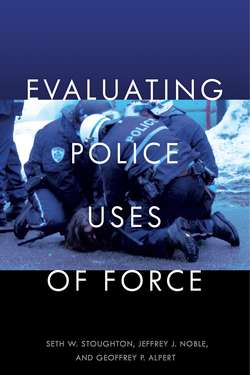Читать книгу Evaluating Police Uses of Force - Seth W. Stoughton - Страница 33
На сайте Литреса книга снята с продажи.
Severity of the Threat
ОглавлениеDetermining that the suspect’s behavior poses a threat to a governmental interest is only part of the analysis. Reviewers must then determine the severity of the threat that the suspect’s actions present. That is, having determined the nature of the threat, reviewers must determine the likelihood that the threatened harm was imminent. Note that this requires reviewers to engage in both a factual and counterfactual assessment of the timeline. Factually, reviewers must determine what happened and when it happened; doing so is necessary to assess the existence and severity of a particular threat at the time force was used. Counterfactually, reviewers must make at least some effort to assess what would likely have happened had the officer not used force at that moment.
As with the nature of the threat, a superficial assessment based exclusively on the subject’s behavior is insufficient. Consider, for example, a subject who is kicking and punching an officer; clearly, that subject is engaged in assaultive resistance. A mechanical review of the subject’s behavior would lead a reviewer to conclude that officers are justified in using force to protect themselves from assaultive resistance. If, however, the subject is an unarmed and physically diminutive ten-year-old, for example, the threat to officer safety is minimal; the use of severe force is inappropriate in that case even if it might be appropriate against a physically larger subject who was doing the same thing. Similarly, pulling away from officers or fleeing on foot is commonly classified as active resistance, presenting a potential threat to the government’s interest in apprehension, but the same actions present very different levels of threat when the subject is a morbidly obese octogenarian (assuming such an individual presents any threat, as discussed above) as opposed to a young, athletically built subject wearing a t-shirt indicating that they are a member of the local college’s cross-country running team.
As those examples suggest, it is not the suspect’s behavior itself that drives proportionality analysis, it is the extent to which the suspect’s behavior threatens a governmental interest. Reviewers can assess the severity of a threat by considering subject characteristics, officer characteristics, encounter characteristics, and environmental factors. The lists below are intended to provide useful, but not exhaustive guidance as to relevant factors.
